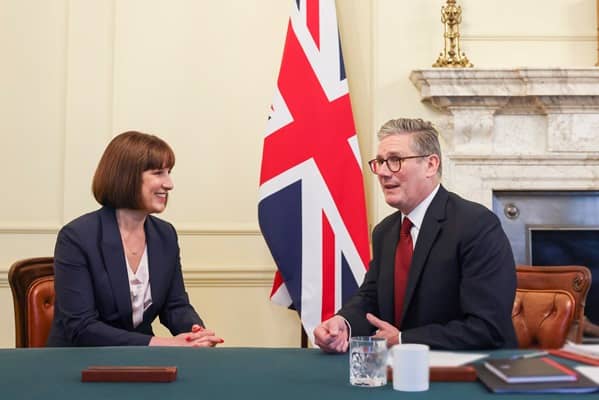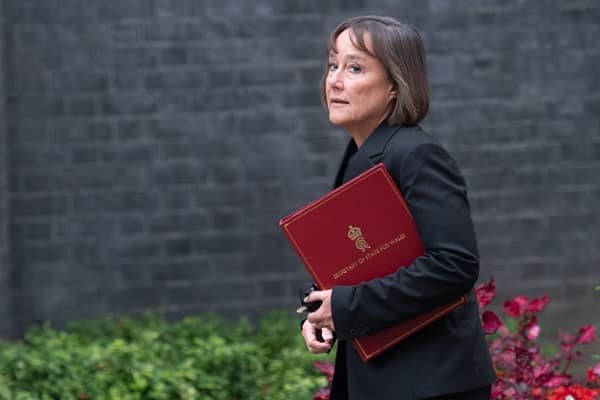Bussiness
Latest tax rise expectations as Starmer warns of ‘fiscal realities’ – London Business News | Londonlovesbusiness.com

The Prime Minister has prepared UK households for up to £35billion in tax rises at the Budget on Wednesday with a speech warning today that the nation needs to face up to fiscal realities.
Much of the weight of tax rises is expected to fall on businesses and business owners, although all workers, savers and investors are likely to feel the consequences of these measures, as well as a rise in the personal tax burden from measures around capital gains tax, inheritance tax and income tax thresholds.
Toby Tallon, Tax Partner at leading wealth management and professional services firm Evelyn Partners, said, ‘Business owners in particular are worried about what the Budget may bring, given the likelihood of potentially seismic tax changes being planned by the Chancellor that could affect their firms and their financial security.
‘Many fear that their hard work ploughing time, energy and money into their businesses – often over many years – will earn rapidly diminishing rewards.
‘Small and medium-sized enterprises are already having to make difficult decisions around staffing, and owners have become more nervous about starting, growing and the prospect of selling businesses. Those difficulties look set to become more grave, and potentially problematic for economic growth, after Wednesday’s Budget.
‘The expected substantial increase to employer National Insurance is likely to be keeping many business owners awake at night. Removing or restricting business and agricultural reliefs against inheritance tax and hiking capital gains tax rates could depress the investment of time, energy, risk and money by entrepreneurs and family businesses, which in turn could jeopardise job creation in the UK.
‘CGT has historically been charged at lower rates than income tax in order to reward entrepreneurs for the considerable risks they take when founding and growing businesses. Restricting IHT business reliefs may make it more costly to pass family firms on to the next generation which could put the viability of long-standing companies – and the ability to continue employing loyal workforces – at risk if family members of business owners have sizeable IHT bills they need to settle.’
-
Increase National Insurance for employers
The Chancellor is expected to increase the NI rate for employers by 1 to 2 per cent, and is also expected to lower the threshold at which employers start paying the tax – with the two measures combined to raise about £20billion.
Employers currently pay NI at 13.8% on a worker’s earnings above £9,100 a year or £175 a week. A two percentage point rise in NI to take the employer rate to 15.8% would raise about £18billion a year according to published Treasury data – but any rate increase looks like it will be combined with a cut to the £9,100 threshold.
Small businesses could be partially protected by increased allowances. Employers with NIC bills of £100,000 or less receive an allowance on the first £5,000, which is expected to rise to £6,000.
It is now thought unlikely there will be an NI charge on employers’ pensions contributions after the impact on the public sector was deemed too politically risky.
Toby Tallon said, ‘This NIC rise could be a significant cost to employers, and possibly their employees too as the remuneration round for the 2025/26 tax year kicks off in the New Year.
‘Our calculations show that an employer with an annual wage bill of £5million across 100 employees would currently have an employer NIC liability of approximately £564,000. An increase of 1.25% would increase that amount to approximately £615,500. This means that a 1.25% increase in the employer NIC rate would roughly translate to an increase in employer NIC costs of 9%.
‘Businesses will be launching into staff reviews from January, setting remuneration for the new financial year beginning in April, and it won’t be surprising if the costs of a rising NIC bill are taken into account at many firms for that year and years beyond.
‘Employers will also review their benefit offering to ensure that they are getting value-for-money in light of this potential increase to overall costs. Notably, an opportunity may arise for employers to offset some of this cost through the use of a salary sacrifice pension scheme, including bonus sacrifice, where that’s not already in place.’
-
Income tax and National Insurance threshold freeze extension
The thresholds for paying 20 per cent income tax (currently £12,570) and for paying 40 per cent income tax (£50,270), as well as the recently reduced additional rate threshold of £125,140, are already frozen until 2027-28. Reeves is expected to extend that freeze for at least another year.
Gary Smith, Financial Planning Partner, said, ‘Fiscal drag is hugely effective at increasing income tax and NIC revenues without raising headline rates, as thresholds and allowances remain frozen and wages increase. It sounds like the Treasury is now tempted to extend this “stealth tax”, which the Office for Budget Responsibility has said is the major driver behind the UK’s growing tax burden.
‘Some reports have suggested that the thresholds freeze could be extended from 2028 to 2030, which the Resolution Foundation says would give Rachel Reeves a boost in meeting fiscal rules by raising £7billion a year by 2029/30. The Institute for Fiscal Studies has said that extending the freeze would pull 400,000 more people into paying the basic rate of income tax and another 600,000 into paying the higher and additional rates by 2029-30 as incomes increase.
‘But one of the more aggravating cliff-edges in the UK income tax system looks like it will go unreformed, and that is the big step at £100,000 where the personal allowance starts to reduce and the marginal rate increases to 60-62 per cent. This can be exacerbated for those with children as various childcare benefits start to disappear.
‘While evidence is scant, this must present a barrier that many workers are not especially keen to cross, and that cannot be good for incentives, productivity or growth.
‘The one upside is that, because it looks like tax relief on pension contributions might escape unscathed and also that salary sacrifice schemes will remain beneficial to firms, then the one tactic to avoid this big marginal tax hit should remain viable – to increase pension contributions via salary sacrifice. There is however the chance that the big increase in employer NI costs could lead some to review their overall remuneration packages, including the generosity of pension benefits.’
-
Increases to capital gains tax
Gary Smith said, ‘While there had been expectations for a substantial CGT rate increase across the board, it looks like the Chancellor may have rowed back a bit, with some intel suggesting an increase only on shares (rather than property), and that any rate increase will probably fall short of alignment with income tax rates. Many investors have already been taking action ahead of an expected CGT rise.
‘CGT receipts for the three months up to and including September were 16.3 per cent higher than the same period of 2023, which must be a result of not just the much-reduced annual exempt allowance but also investors realising gains over the last year ahead of an expected increase in the rate of CGT.
‘If the Chancellor announces on 30 October a rate rise to come in on 6 April 2025, that will prompt thousands of investors to realise an avalanche of gains in the subsequent five months. This will boost tax revenues in the 2024/25 tax year but CGT takings could drop off dramatically in the following year. Alternatively, bringing in a higher rate immediately – which would be administratively more tricky, but has precedent from George Osborne in June 2010 – would catch out more investors who want or need to sell in the short term.
‘While the Prime Minister has said that the Government is more relaxed about targeting those who earn some of their living from shares or investments, we hope the Chancellor remembers that this includes hundreds of thousands of people who own and manage their own businesses, either solely or in partnership or as a family. And also, that many have banked everything on the eventual sale of those business assets.
‘We surveyed UK business owners recently and found that 29% had accelerated business exits in the last year, and most of those did so because of concerns over an increase in CGT. Moreover, the prognosis for tax revenues in the medium to long term from higher CGT rates is uncertain at best – according to HMRC’s own analysis – and it threatens to weaken business investment. Our survey also revealed that higher CGT rates announced in the Budget would deter 46% of business owners from starting a new business – and 48% would consider leaving the UK if the overall tax environment becomes more onerous.
‘Taxing inflationary gains – as occurs currently – is widely regarded as punitive, so it seems sensible that any CGT rate increase should come with an adjustment for inflation, either through an indexation allowance or by taper relief, before being taxed.
‘Finally, there is the possibility that the CGT at death uplift rule will be reformed, meaning that beneficiaries inherit assets not at the value at death, but at the value the deceased first purchased them at, with the CGT liability that entails. That could be significant hike on the taxation of assets at death.
‘Higher CGT rates should focus everyone’s mind firstly on the importance of tax wrappers like ISAs and pension, which protect investments from tax on both capital gains and dividends, and secondly on the use of annual tax-exempt allowances. This is especially important if you are married or in a civil partnership and can take advantage of both sets of allowances, and transfer savings and investments so they do not attract unnecessary tax liabilities.’
-
Reforms to inheritance tax reliefs
Ian Dyall, Head of Estate Planning, said, ‘The taxation of pension pots at death and business and agricultural property reliefs look like they are firmly in the crosshairs at the Budget, although gifting rules could be set for a tightening up too. If the nil rate bands are not cut in some way, which would broaden the scope of IHT, only a minority of estates might be affected – but the ones that are could be impacted quite severely.
‘If business and agricultural property reliefs are cut, it is quite possible that modest family-owned small and medium-sized enterprises could get caught up in measures intended to target the very wealthiest families, with unintended consequences for employment and local communities.
‘It should also be possible to exclude AIM shares from business relief without dismantling the relief altogether, but even that step must be examined for the unintended consequences it could have for the AIM market and encouraging funding for smaller UK companies.’
The AIM market has already shrunk rapidly over the last year in terms of firms listed, and the AIM index is nearly 5 per cent down over the last six months.
On defined contribution pension pots, Dyall says, ‘It’s quite possible – and even, reading the runes, quite probable – that the Budget will reform the favourable tax treatment of pension pots at death. This could take the form of the full fund being subject to IHT or just the excess over the current death benefit limit of £1,073,100.
‘Bringing defined contribution pension pots into someone’s taxable estate seems to be very much on the cards, as it can be portrayed as fixing an IHT “loophole” and will have little impact on economic incentives. And the income tax rule for income withdrawals if the death occurred before age 75 could also be abolished to make future withdrawals taxable at the beneficiary’s marginal rate in all circumstances.
‘The question is, if this does occur, will there be any transitional arrangements for those who have made significant financial decisions on the basis of current rules? Also, while taxing pension pots at death might not interfere with economic efficiency, it will of course have behavioural implications, in that savers are bound to take other steps to mitigate IHT.’
On gifting, Dyall says, ‘One relatively easy way for the Government to make it more difficult for families to avoid paying IHT would be to tighten up the gifting rules – and specifically the seven-year rule.
‘Under “potentially exempt transfer” rules, most gifted assets will leave the estate altogether if the giver is still alive after seven years. But also, after two years there is a chance the gift(s) could be entitled to taper relief, where the IHT rate falls to as low as 8 per cent in the final year. The Chancellor could extend the rule out to 10 or more years or even abolish it, and could also look at diluting or scrapping taper relief.
‘The benefits of PETs provide an incentive to give away wealth during lifetime, so diluting them could jam up the transfer of wealth to younger adults who are more likely to spend it, restricting the flow of liquid funds back into the economy.’
On nil rate bands, Dyall says, ‘The main and residential NRBs have been frozen at £325,000 and £175,000 respectively in recent years and of course inflation in the values of property and investments means that more estates are being drawn across these thresholds. If these are cut more families of relatively modest wealth will become liable to IHT, which might not be the headline that the new Government wants.
‘While the RNRB provides a valuable extra relief to many families as house prices have risen, especially in the South East of England, it is not available to those who don’t have children or who simply choose to leave their main residence to someone who isn’t a direct descendant – and has been criticised for this bias.
‘The Chancellor might just get rid of the RNRB altogether, with the possible sweetener of raising the main NRB by a token amount to something like £350k or £400k – although it’s not clear how much would be raised by this combination of steps.’








